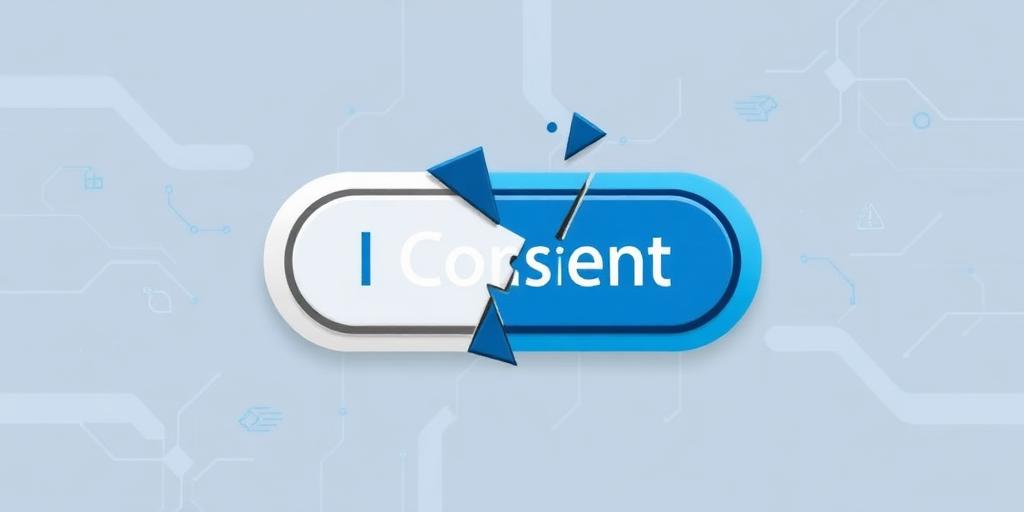"I Agree": The Broken Model of Digital Consent and How to Fix It
In today's digital landscape, navigating the internet often feels like traversing a minefield of pop-up windows and lengthy terms of service agreements. Before accessing our favorite websites, apps, or online services, we are routinely confronted with the ubiquitous "I Agree" button. This seemingly simple click represents our consent to the terms and conditions, privacy policies, and data-sharing practices of these platforms. However, the reality is that this model of digital consent is fundamentally broken. This post examines the flaws in the current system and explores potential solutions for a more transparent and user-centric approach to online consent.
The Illusion of Informed Consent
The core problem lies in the illusion of informed consent. How many of us genuinely read the entirety of a privacy policy before clicking "I Agree"? Studies consistently show that a vast majority of users simply scroll to the bottom and accept the terms without understanding the implications. This is due to several factors:
- Length and Complexity: Privacy policies are often lengthy, written in dense legal jargon, and difficult for the average person to comprehend.
- Cognitive Overload: Users are bombarded with consent requests, leading to fatigue and a tendency to blindly accept.
- Lack of Alternatives: In many cases, declining to consent means being denied access to essential services, leaving users with no real choice.
This creates a situation where consent is obtained, but it is neither informed nor freely given. Users are essentially forced to agree to terms they don't understand, relinquishing control over their personal data.
The Consequences of Broken Consent
The consequences of this broken consent model are far-reaching. Users are often unaware of how their data is being collected, used, and shared. This can lead to:
- Privacy Violations: Data breaches and unauthorized access to personal information.
- Targeted Advertising: Manipulation and exploitation through personalized ads.
- Discrimination: Algorithmic bias and unfair treatment based on personal data.
- Loss of Control: Erosion of individual autonomy and the ability to make informed choices about one's digital footprint.
Fixing the Model: Towards Meaningful Consent
To address these issues, a fundamental shift in how digital consent is obtained is needed. Here are some potential solutions:
- Transparency and Clarity:
- Plain Language: Rewrite privacy policies in clear, concise, and easily understandable language.
- Visual Aids: Use infographics, videos, and other visual elements to explain complex concepts.
- Layered Information: Provide a concise summary of key points upfront, with the option to delve deeper for more details.
- Granular Consent:
- Specific Permissions: Allow users to grant or deny consent for specific data uses, rather than requiring blanket agreement.
- Purpose Limitation: Restrict data collection and use to the stated purpose for which consent was obtained.
- User-Centric Design:
- Consent Dashboards: Provide users with a central location to manage their consent preferences across different platforms.
- Revocable Consent: Make it easy for users to withdraw their consent at any time.
- Regulatory Frameworks:
- Standardized Consent Forms: Develop standardized consent forms that are recognized across different platforms and jurisdictions.
- Enforcement Mechanisms: Establish robust enforcement mechanisms to hold companies accountable for violating user privacy rights.
Examples of Progress
Some progress is already being made in this direction. The General Data Protection Regulation (GDPR) in Europe has set a higher standard for data protection and consent. The California Consumer Privacy Act (CCPA) also provides consumers with greater control over their personal data. These regulations are pushing companies to be more transparent and accountable in their data practices.
The Path Forward
The journey towards a more meaningful model of digital consent is ongoing. It requires a collaborative effort from policymakers, tech companies, and users themselves. By embracing transparency, user-centric design, and robust regulatory frameworks, we can create a digital environment where consent is truly informed, freely given, and respected.









